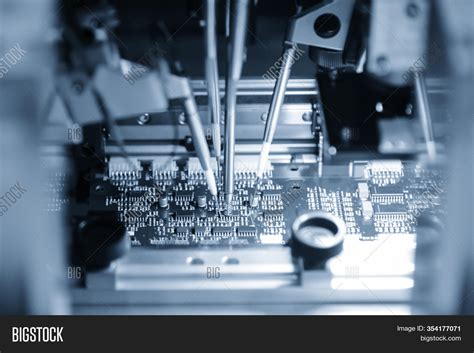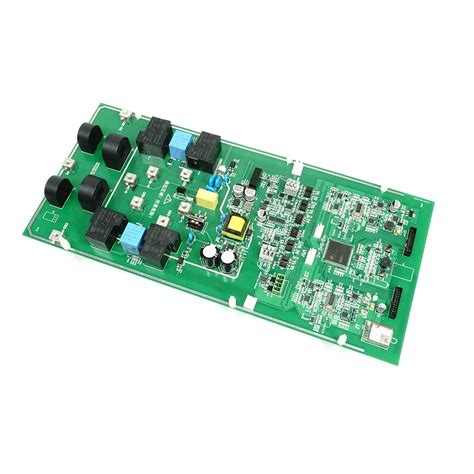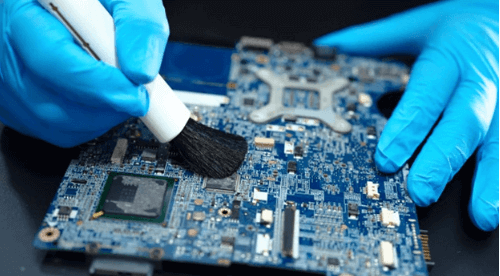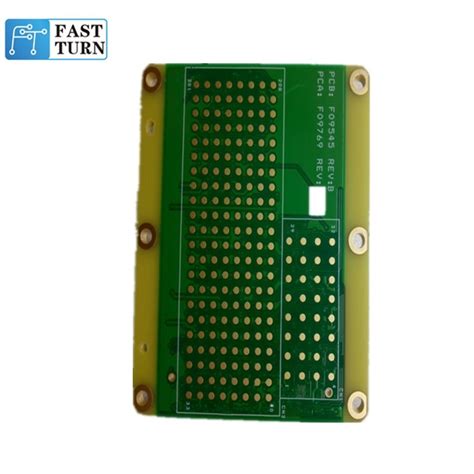Mastering Board Assembly: Tips for Flawless Execution
Key Takeaways
Mastering the intricacies of pcb assembly is crucial for anyone involved in electronics manufacturing. Whether you are a novice or an experienced professional, understanding the core principles of pcba can significantly improve your workflow and project outcomes. One of the key takeaways is to familiarize yourself with essential tools and materials required for effective assembly. This foundational knowledge not only aids in achieving a precise fit but also minimizes the risk of errors during the assembly process. Additionally, recognizing common pitfalls in pcb assembly can help you develop strategies to avoid them, thus enhancing your overall efficiency.
Moreover, effective quality control measures are non-negotiable when it comes to ensuring precision in board assembly. By integrating routine checks into your workflow, you can catch mistakes early and maintain high standards throughout the project. Advanced techniques for handling complex boards will also elevate your capabilities, allowing you to tackle difficult tasks with confidence. Finally, remember that teamwork plays a vital role; collaborating with others can lead to better problem-solving and innovation during each project cycle. Embracing these takeaways will not only bolster your skills but also position you for superior results in future projects.
Introduction to Board Assembly: Understanding the Fundamentals
Board assembly, particularly PCB assembly (PCBA), is a critical phase in the manufacturing process of electronic devices. Understanding the fundamentals of board assembly helps both novices and seasoned professionals grasp essential concepts that influence the quality and performance of electronic products. At its core, pcb assembly involves the systematic integration of various components onto a pre-designed circuit board, ensuring that every part is precisely placed and soldered to achieve electrical conductivity and reliability.
To effectively engage in board assembly, one must familiarize themselves with key terminologies, tools, and best practices that lead to flawless execution. For example, knowing about different types of soldering techniques—such as wave soldering or reflow soldering—can significantly affect the outcome of a project. Furthermore, being aware of common industry standards, such as IPC-A-610 for acceptability requirements for electronic assemblies, enhances one’s capability to meet quality demands.
Consideration for environmental factors also plays a crucial role in pcb assembly processes. Factors like humidity and temperature can impact material behavior during soldering, leading to potential defects if not managed correctly. A foundational understanding coupled with practical skills ensures that you can confidently tackle your projects while minimizing errors.
| Aspect | Importance |
|---|---|
| Terminology | Vital for clear communication |
| Tools | Selection impacts efficiency and quality |
| Techniques | Mastery is essential for precision |
| Environmental Factors | Affects materials and overall performance |
In summary, acquiring knowledge about the essentials of board assembly forms the backbone of successful PCBA outcomes. This understanding not only equips you with the skills needed for precise assembly but also cultivates an attitude of continuous improvement in your craft.

Essential Tools and Materials for Effective Board Assembly
Successfully navigating the intricacies of pcb assembly requires a keen understanding of the essential tools and materials that facilitate a smooth workflow. At the forefront, a reliable soldering iron is indispensable; it enables precise application of solder to connect components securely to the pcba. Additionally, high-quality solder wire is crucial for creating solid joints that withstand both mechanical stress and thermal cycling.
Incorporating proper tools such as anti-static wrist straps helps prevent damage to sensitive electronic components during assembly, providing an extra layer of protection. A well-organized workspace, equipped with tool organizers and component trays, enhances efficiency and minimizes errors. Investing in good lighting is also vital, as it improves visibility and allows for meticulous inspection of each component placement.
For handling small parts, tweezers with precise grips are essential, ensuring that every component is placed accurately without causing damage. With these tools at your disposal, your ability to execute flawless processes in pcb assembly will significantly improve, ultimately leading to superior results in your projects. As you gather these materials, remember that attention to detail in preparation can pave the way for a successful assembly experience that meets both quality standards and project deadlines.
Step-by-Step Guide to Flawless Board Assembly Techniques
Achieving flawless pcb assembly requires a systematic approach and attention to detail. To begin with, ensure that the workspace is clean and well-organized. This sets a productive environment where mistakes can be minimized. Next, familiarize yourself with the printed circuit board assembly (PCBA)** layout and schematic. A thorough understanding of the components and their placements is crucial; this knowledge aids in avoiding common pitfalls during the assembly process. As you proceed with the assembly, take care to verify each component’s orientation and placement before soldering. It’s essential to use the right tools for the job, such as precision soldering irons and anti-static tweezers, to handle small components effectively.
Additionally, applying proper soldering techniques will significantly impact the quality of your pcb assembly. If possible, employ techniques such as hand-soldering for through-hole components and reflow methods for surface mount devices (SMD). Both processes demand consistent temperature control and timing to avoid damage to sensitive components. Regularly inspecting your work at various stages will help catch any errors early on, ensuring that your final product meets quality standards.
Furthermore, don’t underestimate the importance of documentation throughout your project. Maintaining a record of your assembly process helps in identifying areas for improvement in future builds and can serve as a useful reference during troubleshooting if issues arise later on. By embracing these step-by-step strategies, you can ensure precision in every PCBA project while enhancing your skills over time.
Common Mistakes in Board Assembly and How to Avoid Them
When it comes to PCB assembly, avoiding common mistakes is crucial for achieving high-quality results. One frequent error is not thoroughly reviewing the PCBA design files before beginning the assembly process. This oversight can lead to misaligned components or incompatible parts being used. To mitigate this risk, it is essential to conduct a detailed examination of the schematics and layouts prior to assembly.
Another common pitfall is inadequate handling of components, which can damage sensitive parts or result in erroneous placements. Utilization of proper tools and techniques for component handling is critical. For instance, using tweezers recommended for electronic components can ensure precision without causing damage.
Additionally, it’s easy to overlook soldering techniques during the assembly process. Poor solder joints can lead to connectivity issues that might not be immediately apparent but could cause significant problems down the line. It’s advisable to ensure that a consistent soldering temperature is maintained and that soldering iron tips are clean before performing any connections.
“Attention to detail at every step improves overall quality and reliability.” Thus, taking time to establish a clean workspace free of clutter can enormously contribute to reducing errors in PCBA execution.
In conclusion, being aware of these common mistakes in board assembly allows assemblers to adopt preventative measures, fostering an efficient workflow and resulting in superior outputs from their projects.
Quality Control: Ensuring Precision in Board Assembly
In the realm of pcb assembly, maintaining high standards of quality control is vital to achieving flawless execution and optimal results. Quality control practices help to prevent faults in the pcba process by ensuring that every step, from component placement to soldering, meets established specifications. One effective method for quality control involves implementing rigorous inspection protocols at various stages of the assembly process. This includes visual inspections as well as automated checks that can detect misaligned components, poor solder joints, or any discrepancies that might compromise the integrity of the board.
Additionally, establishing a robust feedback loop where technicians and engineers can report issues encourages continuous improvement. Training personnel on best practices for quality assurance ensures their awareness of potential pitfalls in pcb assembly. Furthermore, maintaining a clean and organized assembly environment minimizes risks associated with contamination or misplaced components, reinforcing precision throughout the project.
Ultimately, meticulous attention to quality control not only enhances the reliability of each pcba but also fosters an environment where excellence is the standard. By embedding these quality control measures into your workflow, you will likely experience reduced rework rates and increased customer satisfaction due to superior performance and reliability of your assembled products.
Advanced Techniques for Complex Board Assemblies
When venturing into complex board assembly, particularly in the realm of PCB assembly, it is essential to adopt advanced techniques that cater to the intricacies of modern designs. One vital approach is the implementation of multilayer boards, which require meticulous attention to layer alignment and thermal management. Utilizing appropriate soldering techniques is also paramount; methods such as reflow soldering and wave soldering can enhance connection reliability across densely populated areas. Furthermore, employing automated assembly processes can significantly improve precision in a high-volume production environment, reducing human error while ensuring consistency across PCBA outputs. It is vital to conduct thorough pre-assembly testing to identify potential issues early, thus mitigating risks associated with component placement and solder integrity. Ultimately, integrating a robust quality assurance process during these advanced techniques will not only elevate the accuracy of your assemblies but also contribute to achieving superior results that meet stringent performance standards.
The Role of Teamwork in Successful Board Assembly Projects
Effective pcb assembly is not just about individual skills; it thrives on teamwork. In any project involving pcba, collaboration among team members can significantly impact the outcome. Each participant brings unique expertise, whether in soldering, inspection, or quality assurance, which collectively enhances the assembly process. Clear communication is essential; when team members are aligned and understand their roles, they can coordinate their efforts more efficiently, minimizing errors and maximizing efficiency. Moreover, fostering a supportive culture encourages team members to share ideas and techniques that contribute to improving overall assembly quality. Emphasizing teamwork also aids in troubleshooting challenges that may arise during pcb assembly, allowing for a more agile response to potential issues. Ultimately, assembling a well-coordinated team translates to achieving flawless execution of each project and delivering superior pcba results that meet or exceed expectations.

Continuous Improvement: Learning from Each Assembly Experience
In the world of pcb assembly, the pursuit of excellence is a continuous journey. Each project presents unique challenges and opportunities for growth, making it essential to approach every assembly experience with a mindset geared towards learning and improvement. Reflecting on past assemblies helps to identify what worked well and what could be refined in future projects. For instance, if a specific pcba technique yielded high accuracy results, it should be documented and employed in subsequent endeavors. Conversely, analyzing instances where defects occurred is equally crucial; understanding root causes enables teams to adjust practices and prevent recurrences. By fostering an environment of open feedback and collaboration, team members can share insights that enhance collective performance. Regular training sessions focusing on advanced techniques can further empower individuals to master new skills, promoting innovation within the assembly process. Ultimately, through diligent reflection and a steadfast commitment to continuous improvement, teams can elevate their competence in board assembly, ensuring that the most precise results are consistently achieved across every project.
Conclusion
In summary, mastering board assembly is an essential skill that can significantly impact the quality and success of any project involving pcb assembly or pcba. It requires a deep understanding of the tools and techniques necessary to ensure precision in every step of the process. As we have explored throughout this article, employing the right strategies, avoiding common pitfalls, and engaging in quality control measures are vital to achieving flawless results. Furthermore, fostering a culture of teamwork not only enhances the assembly process but also encourages innovative solutions for complex challenges. Embracing a mindset of continuous improvement allows practitioners to learn from each experience, refining their skills and processes over time. By implementing these insights and techniques, individuals can elevate their board assembly practices, ultimately leading to superior outcomes in their projects.
FAQs
What is PCB assembly?
PCB assembly, often abbreviated as PCBA, refers to the process of soldering electronic components onto a printed circuit board (PCB) to create a functional unit.
What are the essential tools needed for effective PCB assembly?
Essential tools for pcb assembly include soldering irons, solder wire, multimeters, tweezers, and a magnifying glass. These tools help ensure precision and customize the assembly effectively.
How can I improve my PCBA skills?
Improving your pcba skills can be achieved through practice, taking courses on electronics, and learning about different soldering techniques. Hands-on experience is crucial for enhancing your abilities.
What are some common mistakes in PCB assembly to avoid?
Common mistakes include misplacing components, using insufficient solder, and failing to inspect the board thoroughly. Identifying these issues early can prevent major setbacks in your project.
How important is quality control in board assembly?
Quality control is vital in board assembly to ensure that all components function correctly and meet specifications. Implementing rigorous testing processes helps maintain high production standards.







